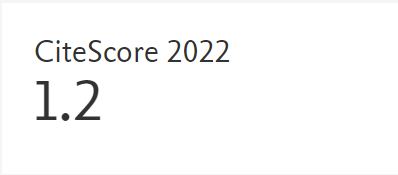Pressure and pressure derivative transient analysis without type-curve matching for elongated reservoirs with changes in facies or width
Resumen
Debido a eventos geológicos y téctónicos muchos yacimeintos presentan geometría alargada en la cual se pueden desarrollar los flujos dual lineal y lineal único. El flujo lineal sencillo podría ser alterado por cambios en facies (movilidad) o cambios del ancho del yacimiento (yacimiento compuesto). Por ende,
se desea identificar y caracterizar estos tipos de sistemas, lo que conducirá a decisiones competentes y una adecuada gerencia del yacimiento. La identificación y determinación de parámetros para tales sistemas se conduce mediante técnicas convencionales (método de la línea recta), curvas tipo de presión versus tiempo y la técnica de la síntesis directa de Tiab (TDS). Esta última ha sido presentada en yacimientos homogéneos de ancho constante. En este trabajo, se extiende la metodología TDS para incorporar variaciones ya sea en movilidad o ancho del yacimiento. Se corrieron varios experimentos numéricos para entender el comportamiento de un yacimiento bajo estas nuevas condiciones. Si el cambio de los parámetros mencionados toma lugar cuando termina el flujo dual lineal se observará una nueva pendiente de ½ en la curva de la derivada de presión. Esta nueva línea se encuentra desplazada hacia arriba de la línea original dual lineal sin considerar la variación de uno de los parámetros estudiados. Cuando la anomalía toma lugar durante el flujo dual lineal la nueva linea de la derivada con pendiente de ½ podría desplazarse hacia arriba o hacia abajo dependiendo de la maginitud de la variación de la movilidad o del ancho del yacimiento. Esta nueva línea no deberíe referirse como régimen de flujo lineal, porque no lo es. En su lugar la hemos llamado régimen de flujo pseudo-lineal. Por tanto, hay que considerar una modificación del intercepto de la linea de pendiente de ½ de 0,5 para flujo dual lineal a un valor mayor o menor, el cual es diferente de (caso de flujo lineal único) para proporcionar nuevas ecuaciones para la estimación de nuevos valores de permeabilidad o ancho del reservorio. La metodología propuesta se verificó satisfactoriamente aplicándola a ejemplos de campo y sintéticos en yacimientos elongados que involucran cambios en movilidad o ancho del yacimiento durante el camino de la onda de transiente de presión.
Referencias bibliográficas
Ehlig-Economides, C., & Economides, M. J. (1985). Pressure Transient Analysis in an Elongated Linear Flow Systems, SPEJ, December, 839-847. https://doi.org/10.2118/12520-PA
El-Banbi, A. H., & Wattenberger, R. A. (1998). Analysis of Linear Flow in Gas Well Production. 1998 Gas Tech. Symp. Calgary, Alberta, Canada, 15-18 March. SPE 39972. https://doi.org/10.2118/39972-MS
Escobar, F. H., Muñoz, O. F., Sepúlveda, J. A., & Mon tealegre, M. (2005). New Finding on Pressure Response In Long, Narrow Reservoirs. CT&F - Ciencia, Tec nología y Futuro. (2) 6, 106-111.
Escobar, F. H., & Montealegre, M. (2006). Effect of Well Stimulation on the Skin Factor in Elongated Reservoirs. CT&F - Ciencia, Tecnología y Futuro. (3) 2, 109-119.
Escobar, F. H., & Montealegre, M. (2007). A Complemen tary Conventional Analysis For Channelized Reservoirs. CT&F - Ciencia, Tecnología y Futuro. (3) 3, 137-146.
Escobar, F. H., Hernández, Y. A., & Hernández, C. M. (2007a). Pressure Transient Analysis for Long Homo geneous Reservoirs using TDS Technique. J. Petrol. Sci. Eng. 58 (1-2): 68-82. https://doi.org/10.1016/j.petrol.2006.11.010
Escobar, F. H., Tiab, D., & Tovar, L. V. (2007b). Determina tion of Areal Anisotropy from a single vertical Pressure Test and Geological Data in Elongated Reservoirs. J. of Eng. and Applied Sciences, 2 (11): 1627-1639.
Escobar, F. H. (2008). Petroleum Science Research Progress. Nova Publishers. Edited by Korin L. Montclaire. Recent Advances in Well Test Analysis for Long an Narrow Reservoirs, 431pp.
Escobar, F. H., Montealegre-M., M., & Carrillo-Moreno, D. (2009). Straight Line Methods for Estimating Perme ability or Width for Two-Zone Composite Channelized Reservoirs. CT&F - Ciencia, Tecnología y Futuro. (3) 5, 107-124.
Massonet, G. J., Norris, R. J., & Chalmette, J-C. (1993). Well Test Interpretation in Geologically Complex Chan nelized Reservoirs, 68th Annual Technical Conference and Exhibition of the Society of Petroleum Engineers. Houston, TX. SPE 26464. https://doi.org/10.2118/26464-MS
Mattar, L. (1997). Derivative Analysis without Type Curves. The Petroleum Society. Paper 97-51, 48th Annual Techni cal Meeting of the Petroleum Society, Calgary, Alberta, Canada. https://doi.org/10.2118/97-51
Miller, F. G. (1966). Theory of Unsteady-State Influx of Water in Linear Reservoirs, J. Inst. Pet. 48 (467): 365-379.
Nutakki, R. & Mattar, L. (1982). Pressure Transient Analysis of Wells in Very Long Narrow reservoirs. 57th Annual Fall Technical Conference and Exhibition of the Society of Petroleum Engineers, Dallas, TX. SPE 11221. https://doi.org/10.2118/11221-MS
Raghavan, R. & Chu, W.C., (1966). On the Determination of Reservoir Pressure when Radial-Flow Conditions are Nonexistent, Gas Technology Conference, Calgary, Alberta, Canada. SPE 35619.
Sui, W., Mou, J. Bi, L., Den, J., & Ehlig-Economides, C. (2007). New Flow Regimes for Well Near-Constant Pressure Boundary. SPE Latin American and Carib bean Petroleum Engineering Conference, Buenos Aires, Argentina, April 15-18. SPE 106922. https://doi.org/10.2118/106922-MS
Tiab, D. (1993). Analysis of Pressure and Pressure Deriva tives without Type-Curve Matching-III. Vertically Fractured Wells in Closed Systems. SPE Western Regional Meeting, Anchorage, Alaska. SPE 26138. https://doi.org/10.2118/26138-MS
Tiab, D. (1995). Analysis of Pressure and Pressure Deriva tive without Type-Curve Matching: 1- Skin and Wellbore Storage. J. Petrol. Sci. Eng.., Vol 12, 171-181. Also Production Operations Symp., Oklahoma City, OK. 203- 216. SPE 25423. https://doi.org/10.1016/0920-4105(94)00040-B
Wong, D. W., Mothersele, C. D., Harrington, A. G., & Cinco-ley, H. (1986). Pressure Transient Analysis in Finite Linear Reservoirs Using Derivative and Conven tional Techniques: Field xamples, 61st Annual technical Conference and Exhibition of the Society of Petroleum Engineers, New Orleans, LA. SPE 15421. https://doi.org/10.2118/15421-MS
Descargas
Derechos de autor 2010 Creative Commons Reconocimiento-NoComercial-CompartirIgual 4.0.

Esta obra está bajo una licencia internacional Creative Commons Atribución-NoComercial-CompartirIgual 4.0.












